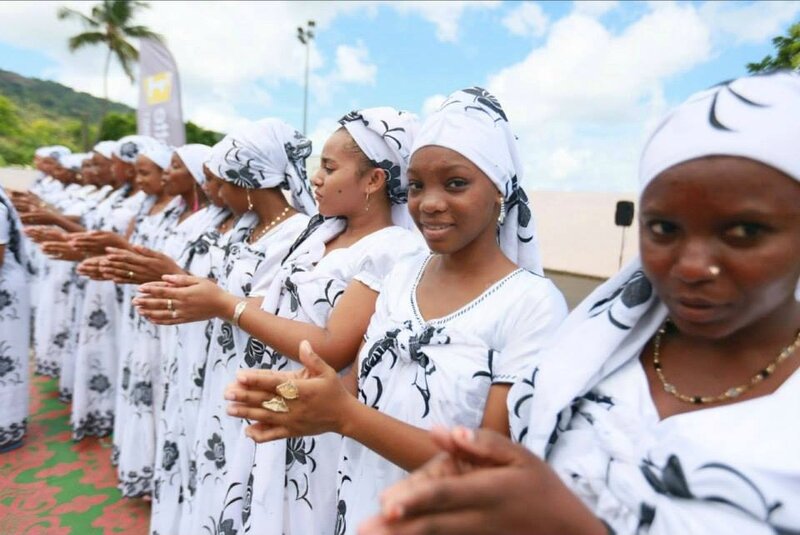Salouva Deba
Most Mahorese women dress in a salouva, which is a big cotton tube knotted around the chest and which falls down to the feet. Underneath the salouva, they usually wear a sparkly t-shirt, or one with artistically cut-out pieces made to resemble flowers or geometrical shapes. The most traditional ladies - generally the older ones - also wear a skirt underneath, which has a recognizable jagged bottom made of lace.
The traditional Mahorese salouva is worn with a kishali on the head or over one shoulder. It's the Mahorese veil, not quite an Islamic one, the difference being that the Mahorese veil is tucked behind the ears whereas the Islamic one is not. It's usually made from the same material as the salouva. A lot of young girls wear the kishali without the salouva, judging the latter too traditional for them.
The Mahorese mindset has always been focused on what is necessary and practical rather than anything superfluous, especially concerning clothes which had to be worn all day and used during all activities. During the Second World War, the salouva came into regular use because, like all the Indian Ocean islands, there wasn't much to be had and very little merchandise arrived on the island. One big tube of cotton to cover everything was seen as the best way of dressing.

Here, all these women and girls are dressed in the same way as the rest of their group for a traditional dance. They're dancing deba, a dance where they move their hands about - it's also known as the "hand dance" - and sing religious songs, often relating the Prophet's life. Each group usually has between 25 and 50 members.
Another traditional female dance is mbiwi. They chant together, then they sit in a circle and tap two bamboo sticks (mbiwi) together in complementary rhythms. A rhythm I've often heard is cha-CHAK-a-cha-CHAK. Two of the ladies in the circle will then get up and dance facing each other, wiggling hips and bottoms faster than a Western mind can imagine. I still haven't worked out how they do that, as their legs and feet don't seem to move at all. Then they sit down, and another two get up. Meanwhile, a third stands up and sings on her own, and each part of her song is met with a chant from the group.








/http%3A%2F%2Fstorage.canalblog.com%2F74%2F16%2F886305%2F104399341_o.jpg)
/http%3A%2F%2Fstorage.canalblog.com%2F46%2F39%2F886305%2F105228464_o.jpg)
/http%3A%2F%2Fstorage.canalblog.com%2F48%2F20%2F886305%2F105197145_o.png)
/http%3A%2F%2Fstorage.canalblog.com%2F13%2F05%2F886305%2F104861776_o.jpg)
/https%3A%2F%2Fstorage.canalblog.com%2F34%2F27%2F886305%2F69902683_o.jpg)
/https%3A%2F%2Fstorage.canalblog.com%2F60%2F68%2F886305%2F69902677_o.jpg)
/https%3A%2F%2Fstorage.canalblog.com%2F88%2F49%2F886305%2F69902659_o.jpg)
/https%3A%2F%2Fstorage.canalblog.com%2F98%2F60%2F886305%2F69896713_o.jpg)
/https%3A%2F%2Fstorage.canalblog.com%2F53%2F34%2F886305%2F69883693_o.jpg)